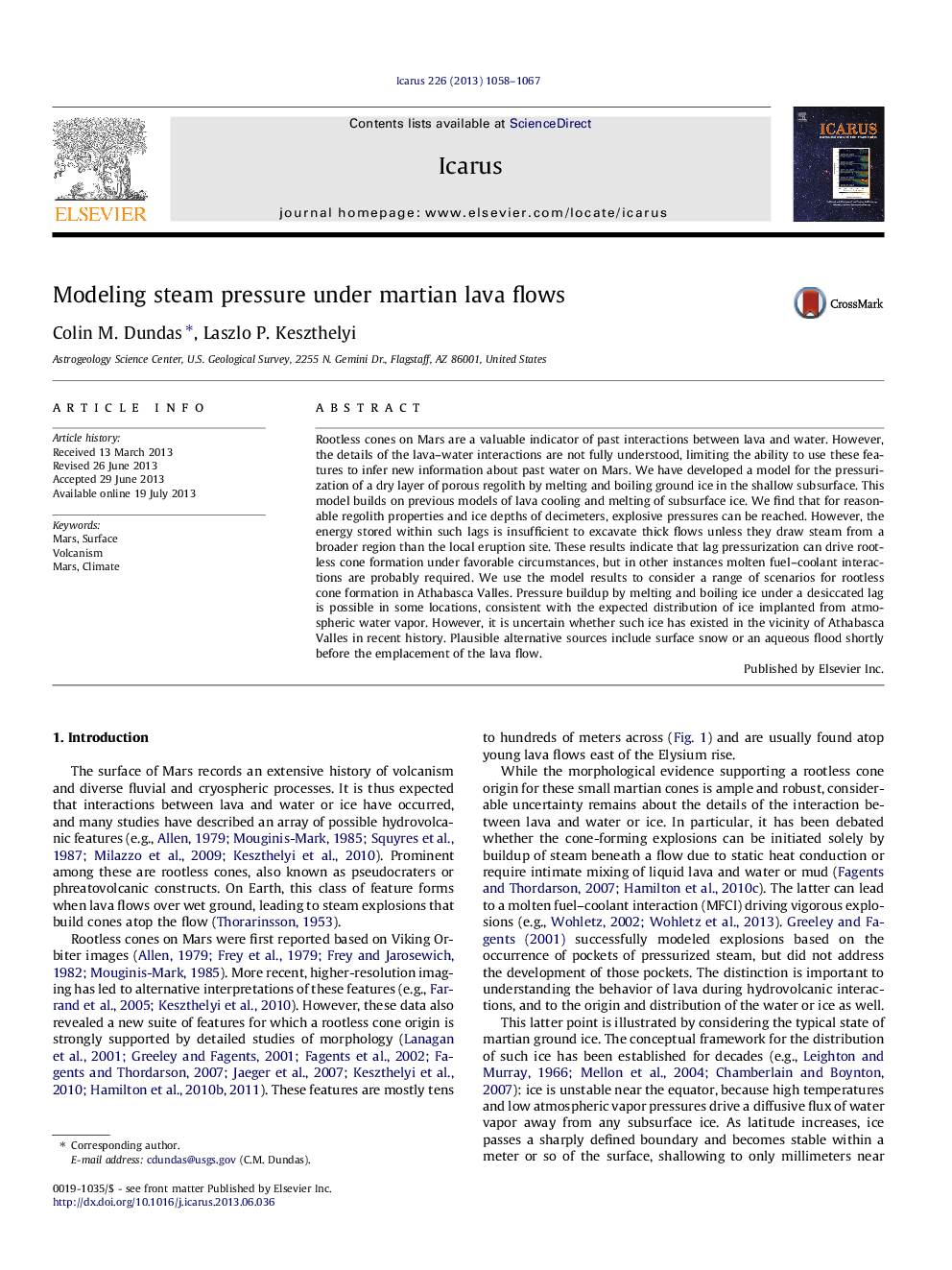| Article ID | Journal | Published Year | Pages | File Type |
|---|---|---|---|---|
| 10701361 | Icarus | 2013 | 10 Pages |
Abstract
Rootless cones on Mars are a valuable indicator of past interactions between lava and water. However, the details of the lava-water interactions are not fully understood, limiting the ability to use these features to infer new information about past water on Mars. We have developed a model for the pressurization of a dry layer of porous regolith by melting and boiling ground ice in the shallow subsurface. This model builds on previous models of lava cooling and melting of subsurface ice. We find that for reasonable regolith properties and ice depths of decimeters, explosive pressures can be reached. However, the energy stored within such lags is insufficient to excavate thick flows unless they draw steam from a broader region than the local eruption site. These results indicate that lag pressurization can drive rootless cone formation under favorable circumstances, but in other instances molten fuel-coolant interactions are probably required. We use the model results to consider a range of scenarios for rootless cone formation in Athabasca Valles. Pressure buildup by melting and boiling ice under a desiccated lag is possible in some locations, consistent with the expected distribution of ice implanted from atmospheric water vapor. However, it is uncertain whether such ice has existed in the vicinity of Athabasca Valles in recent history. Plausible alternative sources include surface snow or an aqueous flood shortly before the emplacement of the lava flow.
Keywords
Related Topics
Physical Sciences and Engineering
Earth and Planetary Sciences
Space and Planetary Science
Authors
Colin M. Dundas, Laszlo P. Keszthelyi,
